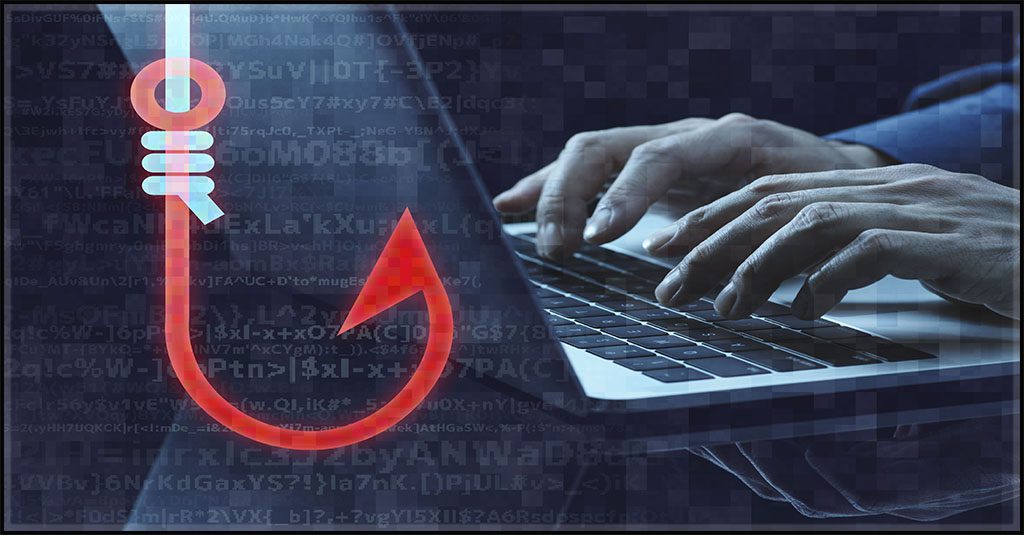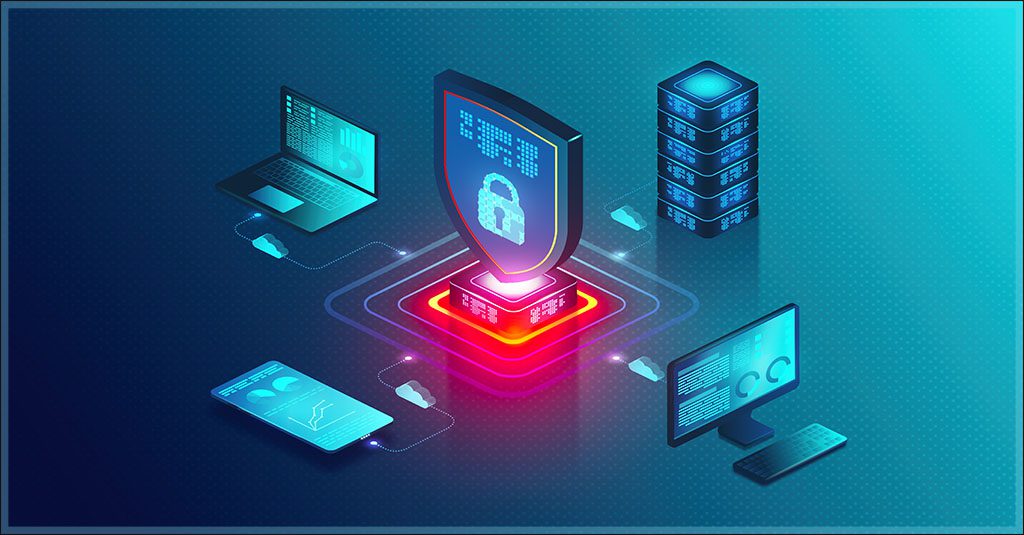What Is Phishing Simulation?

In the world of aviation, pilots are expected to clock in several hours inside flight simulators every few months to continuously validate their licenses. They could be military or commercial pilots with years of experience under their wings who have flown every aircraft possible — yet none of it would matter if they didn’t put in those simulation hours. Why? It’s because aviation professionals know that staying sharp and prepared is a never-ending journey that requires hours of training and resilience.
The same could be said about how an organization should approach its security practices. Just like pilots hone their skills through repetitive simulator training, companies must also recognize the need to train their workforce against phishing attacks — one of the most persistent and evolving threats in today’s digital-first business landscape. In this blog, we’ll help you understand what phishing simulation is, why it is important and how it supports organizations to train employees to hold their own against the modern cybercriminal.

Learn how to spot today’s most dangerous cyberattack & get defensive tips in Phishing 101 GET EBOOK>>
What is phishing simulation?
Unintentional insiders cause over 65% of accidental insider incidents by interacting with a phishing message. Couple this statistic with the numerous cyber threats an organization faces daily, and it becomes clear that the best, most cost-effective way to improve enterprise security begins with the workforce. To defend the growing number of attack surfaces, businesses need to rely on the vigilance and awareness of their employees. An excellent practice to get the workforce to adopt sound cybersecurity practices is phishing simulation.
In a typical phishing simulation, employees receive simulated phishing emails, texts or phone calls that mimic real-world phishing attempts. These messages use highly convincing social engineering strategies, like impersonating someone an employee may know personally to gain their trust or creating a sense of urgency to manipulate them into carrying out certain requests. After completing the simulation, companies can collect data on how employees responded to the simulated emails and use it to gauge their level of phishing awareness and develop more effective training strategies.
Why do companies use phishing simulations?
Like flight simulations, a phishing simulation allows businesses to educate and train their employees in a controlled environment to recognize and handle malicious phishing attempts appropriately. It isn’t just a one-time exercise but an ongoing commitment to stay ahead of cybercriminals and their ever-evolving tactics.
Moreover, phishing simulations can help companies avoid business-ending scenarios or the need to spend millions of dollars in legal fines or remediation efforts. Take the example of the Port of Seattle.
In an incident that could have been easily avoided, the Port of Seattle’s Diversity, Equity & Inclusion department fell victim to what the auditors categorized as a classic phishing scam in which bad actors posed as an unnamed service provider that was owed money by the port. The attack cost the enterprise $500,000, and while the Port of Seattle recovered some of the money, the cybercriminals got away with a hefty $184,676.
This example highlights just one among thousands of organizations that fall prey to phishing scams.
Besides employee education and training, companies also use phishing simulations to:
- Assess their organization’s vulnerability to phishing attacks.
- Identify potential weak points in their cybersecurity defenses.
- Enhance their overall security posture.
- Fine-tune their security protocols.
Now that we understand why companies need and use phishing simulations, let’s look into how they implement this security training practice.

Learn how Datto EDR satisfies cyber insurance requirements for endpoint protection & EDR. DOWNLOAD REPORT>>
What is the phishing simulation process?
Implementing and engaging the workforce with a phishing simulation requires a multifaceted approach to protect organizations against phishing attempts. This type of security awareness training is often directed by a company’s IT security team or administrators.
Here are the basic steps involved in the phishing simulation process:
- Planning: This phase revolves around how organizations define their security goals and consequently the scope of their phishing simulation. It helps better determine the target audience, scenario details, specific groups or departments — including executives — and the specific objectives they aim to achieve.
- Creating the simulation: Once a simulation plan is strategized, the next step is putting pen to paper. IT professionals draft realistic phishing emails or messages, imitating common cybercriminal tactics. Often, IT pros use specialized phishing simulation software that makes it easy for them to quickly deploy a ready-made phishing exercise, or modify an existing template to replicate the specific threats their employees may face. They ensure that their subject lines, sender addresses and email content look as authentic as possible, serving as the perfect bait to test employee responses.
- Delivery: The mock phishing emails are then sent out to all, selected or randomized employees, depending on how the organization has planned its training exercise. The objective of this step is to replicate real-world phishing attempts and observe how an employee behaves.
- Monitoring: After sending out the simulated phishing emails, organizations monitor how employees interact with them. They make notes of metrics like open rates, click rates, response times and interaction patterns, such as submitting user credentials, to analyze post the exercise.
- Analysis and reporting: Using the data collected, organizations now analyze it to identify vulnerabilities and trends among their employees. IT pros can then use this information to generate reports and evaluate the effectiveness of the simulation.
- Education: Employees who interacted with the simulated phishing emails are informed of the exercise and provided with feedback and subsequent training. This phase of the process aims to educate individuals about the harmful nature of phishing and how to recognize and respond to such threats effectively.
- Remediation: The next step revolves around addressing the security gaps and weaknesses discovered during the simulation, such as employee mistakes while interacting with the simulated phishing emails. Organizations may choose to launch a security training program to improve or update their security protocols to better safeguard their IT environment and employees from actual phishing attempts.
As bad actors become more inventive in their approach to phishing, organizations must evolve to adapt. Their phishing simulation exercises need to reflect current cybercriminal trends to ensure employees can identify and address phishing attempts independently and consistently.
How often should you do phishing simulations?
Phishing simulation isn’t a one-stop solution to fend off phishing attacks. Organizations must carry out simulations regularly, enabling employees to stay vigilant and prepared at all times.
It is advisable to run monthly or quarterly phishing simulations. However, the frequency of the exercise varies from one organization to the next based on their:
- Security culture
- Employee turnover rate
- Previous simulation results
- Existing security training practices
- Budget and resources
Many businesses conduct phishing simulations quarterly and adjust the frequency based on the above factors. There’s no one-size-fits-all approach; experiment until you find what works for your organization.

Explore how AI technology helps businesses mount a strong defense against phishing GET INFOGRAPHIC>>
Do phishing simulations work?
The number of times this question has been raised about phishing simulations has fallen in recent times due to how effective they’ve become in helping companies curtail malicious attacks. We know security awareness training drives improved security, and phishing simulation is an extension of that. However, it is important to understand that phishing simulations do not guarantee absolute protection. They should be used as part of a comprehensive cybersecurity awareness training program, along with a handful of other best practices.
What phishing simulation metrics should be tracked?
It would be impossible to know how well an organization’s employees are prepared for a phishing attack if their performance isn’t tracked. Here are the key metrics that help businesses assess the effectiveness of their phishing simulation campaigns:
- Open rate: As the name suggests, this metric measures the percentage of the workforce that opened the simulation email. If open rates are high, it means that the email’s subject line and content were convincing enough. It’s also important to note that employees may open an email to confirm whether it’s an authentic email or not. Tracking open rates enables organizations to evaluate how well their simulation worked and understand what action an employee performed after opening a mock email.
- Click rate: The click rate captures the percentage of employees who clicked on a phishing link included in the phishing simulation email. High click rates signify that employees showed little caution and failed to identify the phishing attempt. Keeping an eye on this metric helps identify those employees who need additional training on handling phishing attempts.
- Compromise rate: A crucial indicator, the compromise rate helps track those employees who followed through on the simulated phishing email’s requests and downloaded malicious attachments or submitted sensitive information. The higher the rate, the higher the vulnerabilities in the organization’s defenses. It highlights the need for targeted training to prevent risky employee behavior and avoid real-world phishing attacks.
- Report rate: This metric depicts the number of employees who reported the phishing incident to an organization’s IT team or management. Unlike the above metrics, a high report rate shines a positive light on employees. It shows that they know how to handle potentially malicious emails and take the necessary steps to thwart phishing attempts.
- Response time: Keeping track of how long it takes employees to report a simulated phishing email can help assess an organization’s incident response readiness. A healthy response time shows that the workforce has been trained well and is more vigilant.
- Repeat offender rate: This is an important metric. It tracks the number of employees who repeatedly fall for simulated phishing attacks and lets the organization identify how many people need additional support in their security awareness training.
Using these metrics, organizations can paint a clear picture of how effective their security awareness training programs are and identify employee behaviors to build a more robust defense against real-world phishing attacks.

Explore the nuts and bolts of ransomware and see how a business falls victim to an attack. GET EBOOK>>
What are the benefits of simulated phishing?
Now that we’ve touched upon how phishing simulations work and in what manner they can be used to bolster an organization’s cybersecurity practices and culture, let’s briefly look at what benefits they offer.
Boost phishing and cyber awareness
Simulated phishing helps cultivate a strong culture of cybersecurity within an organization. This security training practice empowers employees to recognize signs of malicious emails and phishing attempts. If the workforce is regularly exposed to simulated threats via simulation emails or text messages, it improves their ability to notice details, like suspicious sender addresses and deceptive content quicker.
What’s more? The training doesn’t just translate to improved security for the organization; it also extends the same heightened awareness outside the workplace, allowing employees to protect their personally identifiable information (PII) and personal and family devices as well.
Threat mitigation and reporting
Phishing simulations also encourage employees to actively contribute to threat mitigation and reporting. In the event they come across a real phishing email, they will be more likely to report it to their IT departments or managers.
This culture of reporting helps the organization identify vulnerabilities faster, simplifies incident response and streamlines the process of dealing with cyberthreats. Managing data breach or ransomware attack attempts is much easier when everyone does their part.
Maintain compliance with industry regulations
Managing compliance is one of the biggest challenges companies face, regardless of size. Since most standards revolve around data protection and privacy, it’s fair to say that simulated phishing enables companies to better adhere to their compliance requirements. Organizations can showcase their ongoing security awareness training as evidence of their efforts to conform to frameworks like GDPR and HIPAA. Phishing simulations also help organizations stay compliant with today’s constantly evolving regulatory requirements around safeguarding sensitive data.
Meet requirements for cyber liability insurance
Cyber liability insurance is growing increasingly important in the current threat landscape. It’s a much-needed layer of protection against the financial and reputational damage that follows a successful cyberattack.
However, obtaining or renewing a policy and filing a cyber insurance claim are not the easiest of tasks for organizations worldwide.
Cyber insurance providers require businesses to meet very specific cybersecurity standards to qualify for coverage. Phishing simulations, just as is the case for improved compliance management, help organizations meet those stringent requirements. An effective and ongoing effort to defend against cybercrime appeals to insurers and helps organizations achieve favorable insurance premiums and coverage, ultimately easing the financial burden imposed by a cyber incident.

Get the scoop on 5 of the worst email-based attacks plus tips to protect businesses from them. GET INFOGRAPHIC>>
What is phishing simulation software?
After understanding how phishing simulation works and what benefits it offers, let’s understand how companies can easily and affordably implement this powerful security awareness training practice.
Numerous software providers have developed phishing simulation software and tools specifically designed to test the cyber awareness of employees using real-world-like phishing attacks. Similar to ethical hacking, mimicking phishing attacks in a controlled and safe environment helps organizations empower their employees to hold their own against cybercrime and fraud.
Such solutions have simplified the task of disseminating enterprise-wide training and streamlined an organization’s ability to enhance its defenses against phishing threats. There are several features to consider to get the most out of a phishing simulation solution.
What features should phishing simulation software have?
Here’s what an organization needs to look out for when picking the ideal phishing simulation solution:
- Recent, real-life scenarios: Phishing simulation software should be constantly updated to reflect the most recent, real-life phishing scenarios that mimic bad actors and their tactics. Each scenario must draw instances from the latest phishing trends and techniques. Realisitc scenarios train employees to spot even the most convincing phishing emails.
- Templated and customizable: The ideal phishing simulation software should offer an extensive library of pre-designed phishing email templates, spanning a host of phishing tactics. It should also enable IT pros and administrators to freely add or customize templates to suit their specific business needs. In doing so, organizations can simulate phishing scenarios that align with their industry standards and anticipated cyberthreats.
- Scheduling and automation: Offeringscheduling and automation empowers an organization to properly plan and execute phishing simulations at strategic intervals. Automating the entire process further supports the administration by eliminating the need for manual intervention. They can rest easy knowing that the training will continue on a pre-set schedule automatically.
- Supplementary training: A well-rounded phishing simulation software offers additional training resources, specifically to those employees who interact with simulated phishing emails. Such individuals would ideally receive immediate feedback supported by educational content to help them understand why the email was a phishing attempt and how to avoid falling prey to such emails in the future.
- Data analysis and reporting: Almost nothing is actionable until it has been recorded, analyzed and reported. Phishing simulation solutions must feature robust analysis and reporting functionalities to track their effectiveness when training employees. Organizations should be able to obtain insights into key metrics, such as open rates, click rates, compromise rates and reporting rates. Detailed reports enable organizations to quickly measure employee progress and make data-driven decisions for improved training. Reports also provide companies with the evidence they need to prove compliance.
Without such powerful functionalities, keeping an organization’s workforce battle-ready will be quite a challenge. Luckily, we can recommend an effective phishing simulation solution to help your employees become a formidable line of defense against the modern cybercriminal.

How much is data really worth on the dark web? Find out in The IT Professionals Guide to the Dark Web! GET EBOOK>>
Conduct phishing simulations and security awareness training with BullPhish ID
BullPhish ID is a surefire way to ensure your employees are ready to handle any real-world phishing attempt. It provides companies with comprehensive security awareness and phishing resistance training programs.
BullPhish ID helps you:
- Optimize training with new videos, quizzes and fresh phishing kits that are added every month to keep training up to date.
- Satisfy requirements for cyber liability insurance purchase or renewal by having strong cybercrime protections — like a user security awareness training program — in place.
- Automate training campaigns and reporting for effortless, set-it-and-forget-it training that gets results.
- Train your way and on your schedule with plug-and-play phishing simulation kits and customizable content that can be tailored to fit your industry’s unique threats.
- Access training in eight languages: English, Dutch, French, German, Italian, Portuguese, Spanish (Iberian/European) and Spanish (Latin).
- Make training easy and convenient for every employee with a personalized user portal.
- Automatically generate and send reports to stakeholders.
What are you waiting for? Book a demo today and take your anti-phishing defense to the next level with our efficient and affordable security awareness training solution.